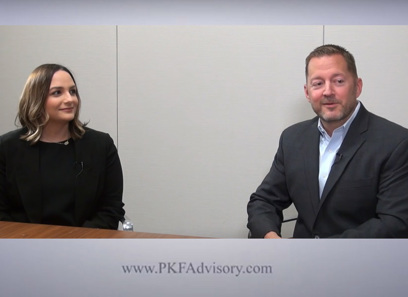The Role of IRS Section 987 in Determining the Taxation of Foreign Currency Gains and Losses
The Role of IRS Section 987 in Determining the Taxation of Foreign Currency Gains and Losses
Blog Article
Recognizing the Effects of Taxes of Foreign Money Gains and Losses Under Section 987 for Companies
The taxation of foreign money gains and losses under Section 987 presents a complex landscape for businesses taken part in worldwide procedures. This section not just needs an accurate evaluation of currency variations however additionally mandates a calculated technique to reporting and compliance. Recognizing the nuances of practical currency recognition and the ramifications of tax therapy on both gains and losses is crucial for maximizing financial end results. As companies browse these intricate needs, they may discover unforeseen challenges and possibilities that might substantially impact their profits. What approaches may be employed to successfully manage these intricacies?
Summary of Area 987
Area 987 of the Internal Profits Code resolves the taxation of foreign money gains and losses for U.S. taxpayers with passions in international branches. This section particularly relates to taxpayers that run foreign branches or take part in purchases including foreign currency. Under Section 987, U.S. taxpayers have to determine currency gains and losses as part of their income tax commitments, specifically when handling practical currencies of international branches.
The area develops a framework for establishing the total up to be recognized for tax obligation objectives, allowing for the conversion of foreign money purchases right into U.S. dollars. This process entails the identification of the practical currency of the foreign branch and evaluating the exchange rates relevant to numerous purchases. In addition, Area 987 needs taxpayers to account for any type of modifications or currency fluctuations that may take place with time, hence influencing the total tax obligation liability connected with their foreign operations.
Taxpayers must keep precise records and execute routine calculations to adhere to Section 987 needs. Failure to comply with these laws can cause penalties or misreporting of taxed earnings, stressing the value of a complete understanding of this section for organizations engaged in global operations.
Tax Obligation Treatment of Money Gains
The tax therapy of currency gains is an essential consideration for united state taxpayers with foreign branch procedures, as outlined under Area 987. This section especially deals with the taxation of currency gains that emerge from the practical money of an international branch differing from the united state buck. When an U.S. taxpayer acknowledges money gains, these gains are generally treated as average income, influencing the taxpayer's overall gross income for the year.
Under Area 987, the calculation of currency gains includes establishing the difference between the changed basis of the branch properties in the useful currency and their equivalent value in U.S. bucks. This calls for mindful consideration of exchange rates at the time of deal and at year-end. Taxpayers must report these gains on Form 1120-F, guaranteeing compliance with Internal revenue service guidelines.
It is crucial for businesses to preserve precise records of their international money transactions to support the estimations required by Section 987. Failure to do so may result in misreporting, resulting in prospective tax obligations and fines. Thus, understanding the implications of currency gains is vital for reliable tax preparation and conformity for united state taxpayers operating internationally.
Tax Treatment of Money Losses

Money losses are normally dealt with as common losses instead of funding losses, enabling full reduction versus common revenue. This distinction is vital, as it avoids the restrictions frequently linked with capital losses, such as the yearly deduction cap. For companies making use of the functional currency technique, losses have to be calculated at the end of each reporting period, as the currency exchange rate fluctuations directly impact the evaluation of foreign currency-denominated assets and obligations.
In addition, it is essential for services to keep meticulous records of all international currency transactions to validate their loss insurance claims. This consists of recording the initial quantity, the currency exchange rate at the time of deals, and any type of succeeding adjustments in worth. By properly taking care of these factors, U.S. taxpayers can optimize their tax settings pertaining to money losses and make certain conformity with internal revenue service laws.
Coverage Needs for Organizations
Browsing the coverage needs for businesses taken part in foreign currency transactions is necessary for keeping conformity and optimizing tax outcomes. Under Section 987, services have to properly report international money gains and losses, which demands an extensive understanding of both economic and tax obligation reporting responsibilities.
Services are needed to preserve detailed documents of all international money purchases, consisting of the day, quantity, and objective of each deal. This paperwork is important for substantiating any gains or losses reported on tax returns. Entities require to identify their useful money, as this decision influences the conversion of foreign money amounts right into United state dollars for reporting objectives.
Annual information returns, such as Kind 8858, might also be necessary for international branches or controlled international corporations. These kinds need detailed disclosures regarding international currency purchases, which help the internal revenue service examine the accuracy of reported losses and gains.
Additionally, services should make certain that they are in conformity with both international accountancy standards and U.S. Usually Accepted Accountancy Concepts (GAAP) when reporting foreign money things in monetary declarations - Taxation of Foreign Currency Gains and Losses Under Section 987. Following these reporting needs mitigates the danger of fines and enhances overall economic openness
Techniques for Tax Optimization
Tax obligation optimization strategies are crucial for businesses participated in international currency transactions, specifically in light of the complexities associated with reporting requirements. To successfully manage international currency gains and losses, companies should take into more tips here consideration several crucial methods.

Second, companies must review the timing of purchases - Taxation of Foreign Currency Gains and Losses Under Section 987. Transacting at beneficial exchange prices, or delaying transactions to periods of favorable money assessment, can improve financial end results
Third, firms may check out hedging options, such as forward choices or contracts, to reduce exposure to money threat. Appropriate hedging can support cash flows and forecast tax responsibilities extra properly.
Lastly, seeking advice from tax obligation professionals that specialize in global tax is vital. They can supply customized techniques that take into consideration the most recent guidelines and market problems, guaranteeing compliance while optimizing tax settings. By carrying out these methods, organizations can browse the complexities of international currency taxes and enhance their overall monetary performance.
Conclusion
To conclude, comprehending the ramifications of tax under Area 987 is necessary for companies involved in worldwide procedures. The accurate estimation and reporting of international currency gains and losses not only make sure conformity with internal revenue service policies yet also enhance economic performance. By taking on efficient approaches for tax optimization and keeping meticulous records, services can alleviate risks related to money changes and browse the intricacies of global taxes more efficiently.
Section 987 of the Internal Income Code attends to the taxes of international currency gains and losses for U.S. taxpayers with interests in foreign branches. Under Section 987, U.S. taxpayers need to compute money gains and losses as part of their income tax obligation commitments, particularly when dealing with useful currencies of foreign branches.
Under Area 987, the estimation of money gains entails identifying the distinction between the changed basis of the branch properties in the useful money and their equal worth in United state bucks. Under Area 987, currency losses see here now occur when the value of a foreign currency declines relative to the U.S. dollar. Entities require to establish their useful money, straight from the source as this decision affects the conversion of international money quantities right into United state bucks for reporting objectives.
Report this page